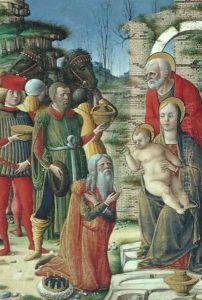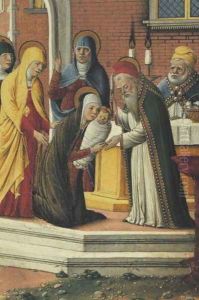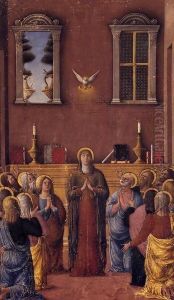da Cremona Girolamo Paintings
Girolamo da Cremona, also known as Girolamo de' Corradi, was an Italian Renaissance painter and miniaturist, born around 1505 in Cremona, a city in the Lombardy region of northern Italy. Not much is known about his early life or training, but he is first recorded in the employ of the court of Ferrara in 1449. His work there included the illumination of choir books and manuscripts, a common practice among artists of the period who specialized in detailed miniature painting.
Girolamo's style was characterized by its delicate precision and use of vivid colors, which was typical of the Ferrarese school of painting that flourished under the patronage of the d'Este family. After working in Ferrara, Girolamo moved to Venice, where he was active from 1457 until his death. In Venice, he collaborated with another noted miniaturist, Cristoforo Cortese, on the illumination of choir books for the Venetian Scuola Grande di San Marco. His work in Venice was well-received, and he gained a reputation as one of the finest miniaturists of his time.
Throughout his career, Girolamo da Cremona worked on numerous commissions for aristocratic and ecclesiastical patrons, contributing to the rich visual culture of the Italian Renaissance. His detailed illuminations often featured elaborate architectural settings, ornate costumes, and a deep understanding of perspective and volume. Unfortunately, like many artists of his time, Girolamo's individual works are not always easily attributed, and only a small number of manuscripts have been firmly ascribed to him.
Girolamo da Cremona's exact date of death is not known, but it is believed that he died around 1557. His legacy is preserved in the beautiful illuminated manuscripts that have survived, which continue to be studied for their intricate design and historical value. Despite the scarcity of biographical details, Girolamo's contributions to the art of manuscript illumination during the Italian Renaissance remain significant.


